What is rain?
It rains quite a lot in Scotland but what is rain and where does it come from?
In this article you can learn:
- Where rain comes from
- How a cloud forms
- How to measure rainfall
- How much rain different places get around the world
This article is suitable for weather topics for primary school learners.
Video - What is rain?
Watch this video to learn all about rain and the wettest and driest countries in the world.
The water that cleans your teeth and forms the puddles you jump in comes from the rain.
Rain is one form of what we call ‘precipitation’. Precipitation is any weather where water falls from the sky: It could be sleet, hail, snow or rain. When the water is a liquid we call it rain.
Raindrops are not tear-shaped like we often see in cartoons and pictures. As they fall they lose their rounded shape and end up more like the top half of a burger bun. Larger ones look more like a parachute and can even fall as fast as 22mph!
Our atmosphere is full of water vapour, an invisible colourless gas. Whenever air cools down the water vapour condenses; this means it turns from a gas into a liquid and becomes tiny water droplets.
These droplets gather to form clouds.
Eventually, the water droplets get bigger and heavier and the air can’t hold them up any longer - these fall down as rain.
Falling to the ground, the rain will run off into rivers and lochs and eventually return to the ocean. Rain can seep into the ground where it can be used by plants, animals and humans.
Some places around the world receive more rain than others. Meteorologists measure rainfall using a rain gauge.
Many places receive no rain. We call these places deserts. The driest places on Earth are the Atacama desert in Chile, with only 15mm a year. . . and the McMurdo Valley in Antarctica with 100mm a year.
Other places are very wet. For example, Argyllshire receives 2275mm per year! Mawsynram in India is the wettest place on Earth receiving 11,871mm per year!
How much rain do you think falls on your house or school each year? Maybe you could measure it and find out!
Where does rain come from?
- The air is full of water vapourWater when it is an invisible gas..
- When air cools down the water vapour condenses from a gas into a liquid and forms tiny water droplets.
- Water droplets gather to form clouds.
- The water droplets get bigger and heavier. The air can't hold them up any longer.
- The water droplets fall down to the ground as rain.
Rain is part of the water cycle.
Rain around the world
Learn how we can measure rain and compare rainfall in different parts of the world.
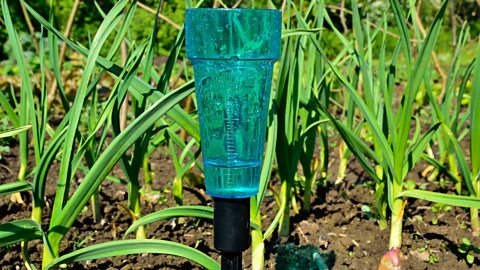
Image caption, Rain gauge
We use an instrument called a rain gauge to measure the amount of rainfall there is.
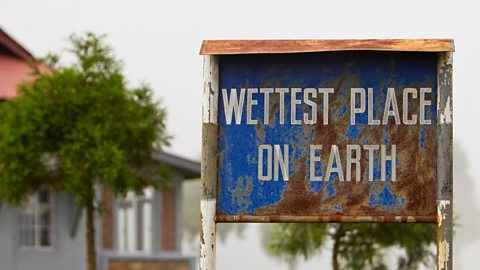
Image caption, Mawsynram
Mawsynram in India is the wettest place on Earth receiving 11,871mm of rainfall every year. They even have a sign to let people know.
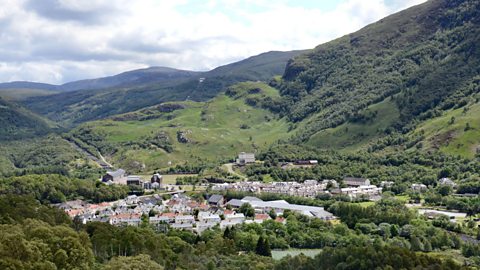
Image caption, Argyllshire
Argyllshire in Scotland gets 2,265mm of rainfall per year. That's a lot of rain!
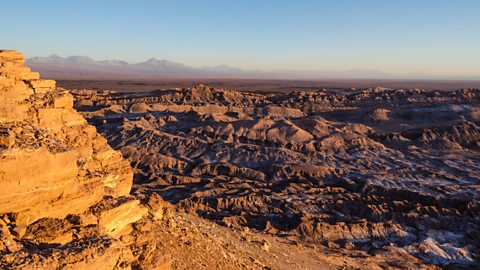
Image caption, Atacama Desert
The Atacama Desert in Chile is one of the driest places on Earth. It only gets 15mm of rainfall per year. Try measuring out 15mm of water to see how little it is.
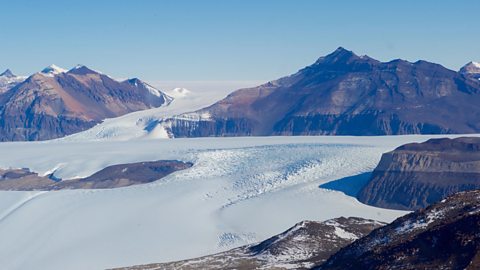
Image caption, McMurdo Dry Valleys
We think of deserts as hot places but they can be very cold too. The McMurdo Dry Valleys in Antarctica are very dry. They receive around 100mm of rainfall per year.
1 of 5
How to measure rainfall
Video - Measuring rainfall
With help from BBC Weather's Kawser Quamer, we can learn:
- Why it is important to measure rainfall
- How we measure rain at weather stations using a rain gauge
- How to make your own rain gauge
KAWSER: It's looking like another rainy day across the country and we can see that on the map by the blues as that rain moves across and the white stuff is snow up over the hills and mountains. But how do we measure rainfall and why is knowing that so important?
The amount of rain can impact many everyday activities. If it's raining, you might need to wear different clothes. You might not even feel like playing outside unless you love puddles.
Wet roads are slippy so drivers have to drive slower. In really bad weather, there might even be flooding.
Farmers need to know how much rain to expect. Too little and their crops dry out. Too much and their crops could drown.
To forecast how much rain there will be, weather reporters like me use measurement data from weather stations all around the UK.
Let's see how rainfall is measured at the weather station at Mugdock Country Park in Stirlingshire.
RONNIE: How is the rainfall measured here?
MUGDOCK COUNTRY PARK EMPLOYEE: If you look down here on the ground, we've got what's called a rain gauge. Now, if you want to come over, there are two different parts to the rain gauge. There's the funnel and the rain goes in the top and travels down this pipe into the bottle and as we can see there's some water in the bottle from yesterday's rain and then what we've got here is, we've got a measuring tube that's get lots of numbers on it.
And what we'll do is, we'll fill that up and see how much water is in the bottle. And we'll get every last drop in there and we'll have a look to see how much is in and it looks like there is 6.3 millimetres of rain that fell yesterday.
KAWSER: You can make your own rain gauge and record the results every day. This could be made from a plastic bottle. Cut the top off the bottle. Make sure the top of the funnel is the same width as the bottle. Add jelly to give the base a level surface and attach a ruler with zero centimetres lining up with the level top of the jelly.
When digging a hole for your rain gauge, make sure it's away from buildings and trees because if it's sheltered, it won't catch as much rain. Let's see what results Ronnie and Adora got from their rain gauge.
RONNIE: Looks like we had five millimetres of rainfall yesterday.
KAWSER: Record your results every day by making a daily chart.
So now you know how to measure rainfall maybe you can find out how wet it will be where you are. Is that how much rain we would normally get for this time of year? And how does it compare to other places?
Why is it important to measure rainfall?
Rainfall has a big effect on our daily lives and the environment we live in. We need the water from rainfall to survive but too much or too little rain can make life difficult. Learn more about how rain affects us here.

Key words about rain
- rain - Liquid water that falls from the sky.
- precipitation - Any water that falls from the sky. Precipitation can be rain, snow, hail or sleet.
- water vapour - Water when it is an invisible gas.
- condense - When water turns from a gas into a liquid.
- meteorologist - A scientist who studies the weather and climate.
- rain gauge - An instrument used to measure the rain.
- desert - A place which receives very little or no rain.
Test your knowledge
Quiz
Make your own rain gauge

You can measure rain at home or at school with your own rain gauge.
- Carefully cut the top off a plastic bottle.
- Use the top of the bottle as a funnelA tube that is wide at the top and narrow at the bottom. It can be used to pour liquid into a small opening.. It should be the same width at the bottle.
- Add jelly to the bottle to give the base a level surface.
- Attach a ruler to your bottle. The 0cm mark should line up with the level top of the jelly.
- Dig a hole for your rain gauge (away from buildings and trees) and wait and see how much rain it catches!
- Record your results every day with a daily chart.
How to make a rain gauge. videoHow to make a rain gauge
The pupils of St Monica’s Primary show you how to make your own rain gauge.

More on Weather
Find out more by working through a topic
- count2 of 22

- count3 of 22
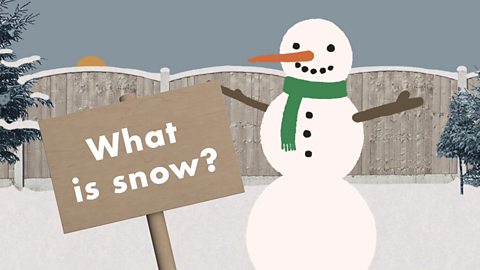
- count4 of 22
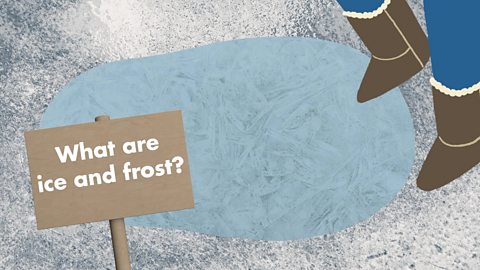
- count5 of 22
